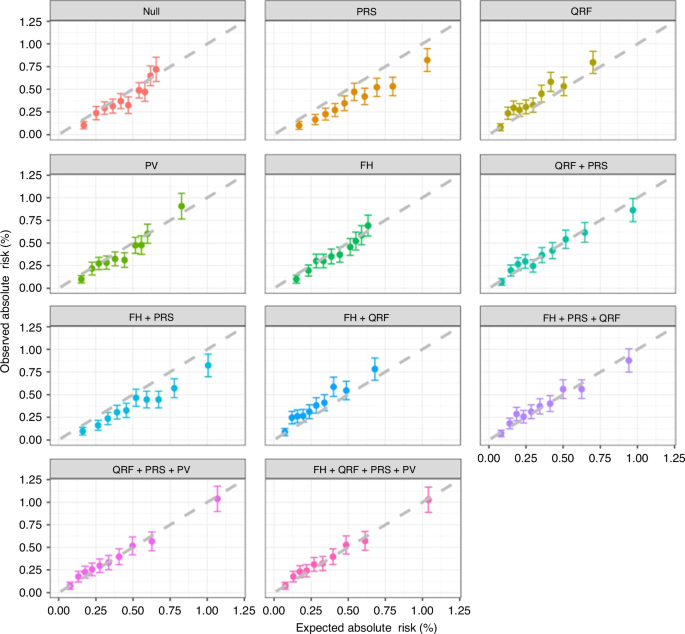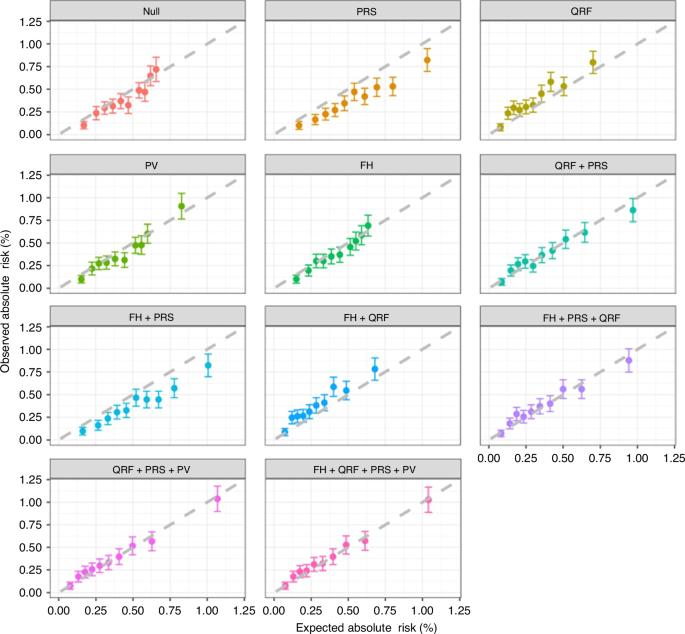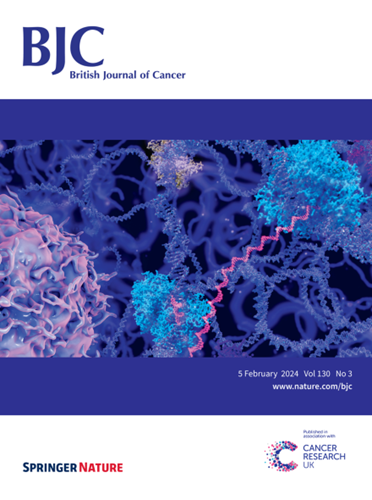Validation of the BOADICEA model for epithelial tubo-ovarian cancer risk prediction in UK Biobank
IF 6.4
1区 医学
Q1 ONCOLOGY
引用次数: 0
Abstract
The clinical validity of the multifactorial BOADICEA model for epithelial tubo-ovarian cancer (EOC) risk prediction has not been assessed in a large sample size or over a longer term. We evaluated the model discrimination and calibration in the UK Biobank cohort comprising 199,429 women (733 incident EOCs) of European ancestry without previous cancer history. We predicted 10-year EOC risk incorporating data on questionnaire-based risk factors (QRFs), family history, a 36-SNP polygenic risk score and pathogenic variants (PV) in six EOC susceptibility genes (BRCA1, BRCA2, RAD51C, RAD51D, BRIP1 and PALB2). Discriminative ability was maximised under the multifactorial model that included all risk factors (AUC = 0.68, 95% CI: 0.66–0.70). This model was well calibrated in deciles of predicted risk with calibration slope=0.99 (95% CI: 0.98–1.01). Discriminative ability was similar in women younger or older than 60 years. The AUC was higher when analyses were restricted to PV carriers (0.76, 95% CI: 0.69–0.82). Using relative risk (RR) thresholds, the full model classified 97.7%, 1.7%, 0.4% and 0.2% women in the RR < 2.0, 2.0 ≤ RR < 2.9, 2.9 ≤ RR < 6.0 and RR ≥ 6.0 categories, respectively, identifying 9.1 of incident EOC among those with RR ≥ 2.0. BOADICEA, implemented in CanRisk ( www.canrisk.org ), provides valid 10-year EOC risks and can facilitate clinical decision-making in EOC risk management.


在英国生物库中验证用于预测上皮性输卵管卵巢癌风险的 BOADICEA 模型
背景用于上皮性输卵管卵巢癌(EOC)风险预测的多因素 BOADICEA 模型的临床有效性尚未在大样本量或较长时期内进行评估。方法我们在英国生物库队列中评估了模型的辨别和校准,该队列由 199429 名无癌症病史的欧洲血统女性(733 例 EOC)组成。我们结合基于问卷的风险因素 (QRF)、家族史、36-SNP 多基因风险评分和六个 EOC 易感基因(BRCA1、BRCA2、RAD51C、RAD51D、BRIP1 和 PALB2)中的致病变异 (PV),预测了 10 年 EOC 风险。该模型在十等分预测风险中校准良好,校准斜率=0.99(95% CI:0.98-1.01)。对年龄小于或大于 60 岁的女性的判别能力相似。当分析仅限于 PV 携带者时,AUC 更高(0.76,95% CI:0.69-0.82)。使用相对风险(RR)阈值,完整模型将97.7%、1.7%、0.4%和0.2%的女性分别归入RR <2.0、2.0 ≤ RR <2.9、2.9 ≤ RR <6.0和RR≥6.0类别,在RR≥2.0的女性中识别出9.1的EOC事件。讨论BOADICEA在CanRisk(www.canrisk.org)中的应用提供了有效的10年EOC风险,有助于EOC风险管理的临床决策。
本文章由计算机程序翻译,如有差异,请以英文原文为准。
求助全文
约1分钟内获得全文
求助全文
来源期刊

British Journal of Cancer
医学-肿瘤学
CiteScore
15.10
自引率
1.10%
发文量
383
审稿时长
6 months
期刊介绍:
The British Journal of Cancer is one of the most-cited general cancer journals, publishing significant advances in translational and clinical cancer research.It also publishes high-quality reviews and thought-provoking comment on all aspects of cancer prevention,diagnosis and treatment.
 求助内容:
求助内容: 应助结果提醒方式:
应助结果提醒方式:


